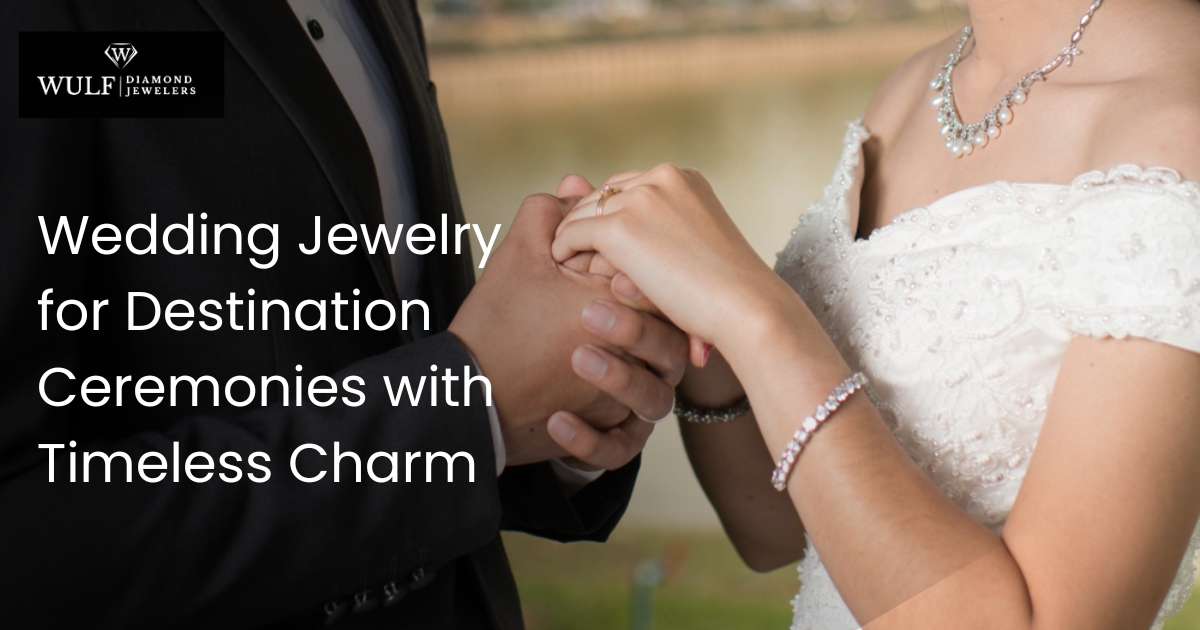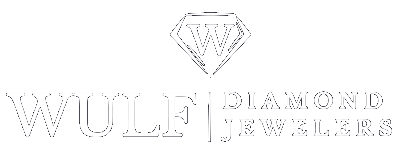A 4-carat diamond ring is a sight to behold. Not only is the cost per carat more expensive for a 4-carat compared to 1-carat, 2-carat, and 3-carat diamond rings, but it is also more difficult to get a good quality diamond of this size. The higher the carat weight, the greater the quality it requires. Why? Because the color and clarity are so evident that getting a lower quality diamond will affect its brilliance and fire.
The cost of a 4-carat diamond engagement ring also depends on the origin of the diamond, the type of setting, the metals used, and additional gemstones.
For 4-carat or bigger diamonds (5-carat), it is better to have a VVS clarity grade with a G-I Color grade. As with other diamonds, you can opt for a step-cut or brilliant cut, but keep in mind that getting a step-cut diamond ring (such as Asscher or Emerald cut) will make inclusions easier to spot.
This 4-carat round brilliant cut solitaire diamond engagement ring has the following specifications

| Characteristics | Specification |
| Diamond Type | Natural Diamond |
| Certification | With Report |
| Diamond Cut | Round |
| Diamond Size | 9.82mm (Approx 4 Carat) |
| Clarity | VVS2 (Very Very Slightly Included – carbon deposits and inclusions are not visible in the naked eye. |
| Color | H |
| Metal | 14K White Gold |
| Setting | 6-Prong |
How Diamond Type Affects Price
The general rule for gemstones is that natural gems are more expensive than lab-created or synthetic ones.
Read also: Diamond Simulants: Diamonds vs. Moissanite and other Simulated Diamonds
While having the same properties and being graded the same way, mined or natural diamonds are more expensive than Lab-Grown (LG) diamonds. Some jewelers think of lab-grown as inferiors, but in reality, it gives diamond jewelry a wider reach and customer base.
If you don’t plan on selling your engagement ring in the future, then going for lab-grown diamond is the more economical alternative. The price difference between a mined diamond vs. a lab-grown ranges from 50%-80%.
Because of its availability, the higher the carat, the higher its cost per carat is. A 4-carat (approx) /9.82mm round cut H VVS2 Natural Diamond will cost around $36,000/carat. A graded round cut brilliant lab-grown diamond, color H with VVS2 clarity costs around $4,000/carat.
How Cut and Shape Affect Price
According to GIA, a diamond cut refers to a diamond’s “proportion, symmetry, and polish” and is usually assigned grades such as Excellent, Very Good, Good, Fair, and Poor. This grading is more common, with round brilliant cut diamonds being the most popular diamond cut in the market.
The diamond shape, on the other hand, is what most people commonly refer to as diamond cuts. We have round, princess, oval, marquis, cushion, among others.
The Round brilliant is the most popular and most common cut, which makes up 50% of the diamonds sold in the market. There are three main reasons why round cut diamonds are famous:
- Round cuts are versatile – they will look good in any ring, on any hand, and can be mounted as a solitaire or with other diamond cuts.
- It is brilliant – a brilliant round cut has 57-58 facets and is cut to ensure maximum brilliance and fire (or light reflection and refraction).
- Inclusions are harder to see
Because of these characteristics, the demand for round-cut diamonds is high, driving the prices up.
Also, unlike 1-carat, 2-carat, and 3-carat diamond rings where cut and shape affect price, bigger carats prices do not usually vary. One of the main determinants would be the type of cut a diamond has.
There are 2 major cuts when it comes to diamonds – Step-cut and radiant/brilliant cut. Emerald and Asscher cut diamonds are examples of a step-cut. They have fewer facets and do not reflect light as much. Since there are fewer facets, inclusions are easier to see. Thus, a good quality emerald or Asscher is difficult to acquire.
On the other hand, brilliant-cut diamonds are those that are cut to reflect and refract light more. Since it has more facets, inclusions are visible but are harder to see than in step-cut diamonds.
Oval Cut
Another popular cut amongst the bigger stones is the oval cut. Oval-cut diamonds have a similar feel as round-cut diamonds but appear bigger because of their elongated shapes.
This particular GIA-certified 4-carat oval cut diamond solitaire engagement ring, costs around $138,000 (at $34,000/carat).
You can get a more affordable option by going with a lower color or a lower grade.
Emerald-Cut
Opting for a step-cut diamond ring, such as this gorgeous multiple-stone 4-carat Emerald diamond ring is another option. However, good-quality step-cut diamonds are quite difficult and end up being more expensive. This is so because inclusions are more pronounced or noticeable. Also, step-cut diamonds are not as “sparkly” as their brilliant-cut counterparts.
Thus, good-quality emerald and Asscher cut diamond rings are usually more expensive than other cuts of this size.
Featured here – 4-carat Emerald cut Halo engagement ring at an approximate price of $166,000(center: 4-carat Emerald Cut E, VVS1, Natural diamond ($41,300/carat); side: two 0.08-carat Baguette diamonds; accent: twelve cubic zirconia stones).
Other Diamond Shapes
Another popular cut for 4-carat diamond rings is the princess cut. Because of its size, the light reflects more making it eye-catching.
Featured here – 4-carat princess-cut solitaire Lab-grown engagement ring $19,200 (center: 4-carat princess-cut, I color grade, VS2 clarity grade, Lab-grown ($4,800/carat)
How Clarity Affects Price
Clarity refers to how “clean” and flawless a diamond is. The more flawless a diamond is, the better light is bounced and refracted, thus giving it more sparkle.
Diamond grading agencies describe diamond clarity using the following:
- FL – Flawless (clear, no inclusions)
- IF – Internally Flawless
- VVS1/VVS2 – Very Very Slightly Included (with inclusions but still eye-clean)
- VS1/VS2 – Very Slightly Included (with more crystal inclusions and visible under 10x magnification)
- SI1/SI2 – Slightly included (carbon inclusions are visible with the naked eye)
- I1/I2/I3 – Included (inclusions are visible and numerous)
Diamonds with FL and IF ratings are rare and expensive. On the other hand, diamonds with VVS and VS clarity are more common in the market and are usually used in engagement rings and other diamond jewelry.
[bafg id=”2341″]
Displayed here
Left: Color I VS1 Clarity Natural Diamond with GIA Report $18,400/carat weight
Right: Color I SI2 Clarity Natural Diamond with GIA Report $15,250/carat weight
How Color Affects Price
The color is one of the main criteria of diamond grading and dramatically affects the price of a diamond or an engagement ring.
Natural and lab-grown diamonds’ color range from colorless (D) to yellow tint (Z). Any color yellower than Z grade is considered Fancy Diamonds (with pinks and blues) and might be more expensive because of its rarity.


Quick Tip: Choosing a near-colorless diamond will appear yellowish if mounted in a yellow gold band. Therefore, if you want to save, you can choose a diamond with a lower color grade and opt for a yellow gold ring band
[bafg id=”2238″]
Left: Princess Cut – Near Colorless. Right: Princess Cut – Faint
Other Aspects to Consider
Diamond Certification
While diamond certification does not affect the look and feel of a diamond, it serves as excellent proof of the quality of your diamond. It gives you 1) the assurance that you are getting what you are paying for and 2) the leverage when you decide to sell your diamond jewelry.
Certified diamonds are more expensive than non-graded, especially for bigger carats. That is because certification is based on the carat weight of a diamond.
Size
Diamond size is different from carat weight. Carat weight refers to how heavy a diamond is (1 carat = 200mg), while a diamond size refers to how big a diamond appears (measured in mm).
It is important to remember that while a diamond has the same carat weight, some cuts appear larger than others. A perfect example is an oval-cut diamond. Because of its elongated shape, a 4-carat diamond ring seems longer than a round cut.
Quick tip: If you want a diamond that appears larger, you can opt for elongated cuts (a marquis, emerald, or oval diamond), and add two smaller diamonds. You can also opt for a smaller center-stone (a 1-carat diamond perhaps) and add smaller stones as a halo to make it appear larger.
Band Setting
Band setting refers to how the diamond is mounted or is held in place.
Solitaires (as with the images above) and Tiffanies are the most common type of diamond settings. It allows maximum light exposure while holding the diamond securely in place.
Usually, for 4-carat or bigger, there is a bridge that supports the diamond. This helps secure the diamond in place.
The good thing about this size is that the stone is the highlight, so even a simple solitaire ring will be enough. However, should you want to dazzle up your 4-carat diamond engagement ring, here are some ideas.
Cathedral
Previously associated with vintage rings, cathedral-style engagement rings are gaining popularity once again.
Cathedral style is a setting where the diamond is placed on top of the ring’s shank (similar to prong style mounting) and is supported with a bearing underneath, and metals arch the side, similar to the metal columns found in cathedrals.
This style makes the ring more pronounced, especially when viewed from the side.
Featured here: 3.75 carat Round Cut, H Color, VVS2 Clarity, Natural Diamond Cathedral Style Engagement ring $134,000.
Jewelers and buyers alike customize the design of the cathedral, making it unique to the buyer. Depending on the intricacy of the design, it will increase the cost of your 4-carat diamond engagement ring.
Note, however, that not all metal can be intricately designed or customized. Read Choosing the Best Metal for your Wedding Bands or Engagement Ring (Part 2) to know more.
Halo
Halo is another popular style for 4-carat diamond rings. Adding smaller diamonds around the center stone will create an illusion of even a bigger diamond. The added diamonds also give additional sparkle to an already brilliant diamond.
You also have the option to try different gemstones to make your engagement truly unique.
read more: Engagement Ring Settings: Choosing the Best Engagement and Wedding Ring Designs
While you can basically do any setting for this carat, it is highly advised that bigger diamonds be mounted as a solitaire or be mounted with much smaller diamonds or gemstones.
Metal
The type of metal you use can affect the cost of your diamond rings.
The more popular metals used for wedding bands are Gold (yellow and white) and Platinum, and in some cases, Silver. Some jewelers also choose harder metals such as Titanium, Tungsten, or Cobalt, but these metals are more popular for men’s engagement rings or men’s wedding bands.
Read: Choosing the Best Metal for your Wedding Bands or Engagement Ring, Choosing the Best Metal for your Wedding Bands or Engagement Ring (Part 2)
Gold
The most popular of all is the 14K White Gold engagement ring. This meets the balance between affordability and durability. White gold is yellow gold but alloyed with white metals and is plated.


Other options available for gold are 10k, 18k, and 22k. Just note that the higher the karat, the softer and the more malleable the metal is.
On the flip side, the higher the karat, the more valuable it is, not to mention more hypoallergenic.
The key to the perfect karat is finding the balance between budget and lifestyle. While we all want to have the highest karat possible, it may not be ideal for persons with more active lifestyles or work requirements.
Another point to consider is getting a gold alloy that is hypoallergenic. While gold is regarded as a noble element and will not react to body chemicals, the alloys used to strengthen it might.
Just a reminder, when choosing white gold as your metal of choice, white gold will tarnish over time and appear slightly yellow. Thus, there is a need to re-plate it to get it back to its white glory.
Platinum
Unlike White gold, where there is a need to re-plate, Platinum will not tarnish. It is also more durable than silver or gold, perfect for those with active lifestyles, but is also malleable, which allows being resized if needed.
Platinum, just like gold, is hypoallergenic but is also alloyed with other chemicals. Thus, check with your jeweler the alloy used with Platinum if you are opting for this metal.
Other metals
Of course, you can choose any other metal you prefer. Silver is one of the metals that is also used, but because of oxidation, it’s less popular than Gold and Platinum. Silver is also soft and malleable and will easily dent and scratch.
Titanium rings are highly durable than other metals. However, because of its hardness, it is hard to do intricate designs. Resizing is also not an option for titanium rings.
Get the best 4-Carat Diamond Engagement Ring you can buy!
Getting the best ring takes a lot of research and consideration. The goal is to get the right factors that maximize and balance beauty and affordability.
Options give more room for customization but also lead to confusion. That is why we are here. AaLAND only employs professional jewelers with extensive experience in jewelry design and making. We will help you get the best diamond ring that will surely make your partner’s eyes sparkle like diamonds.




















